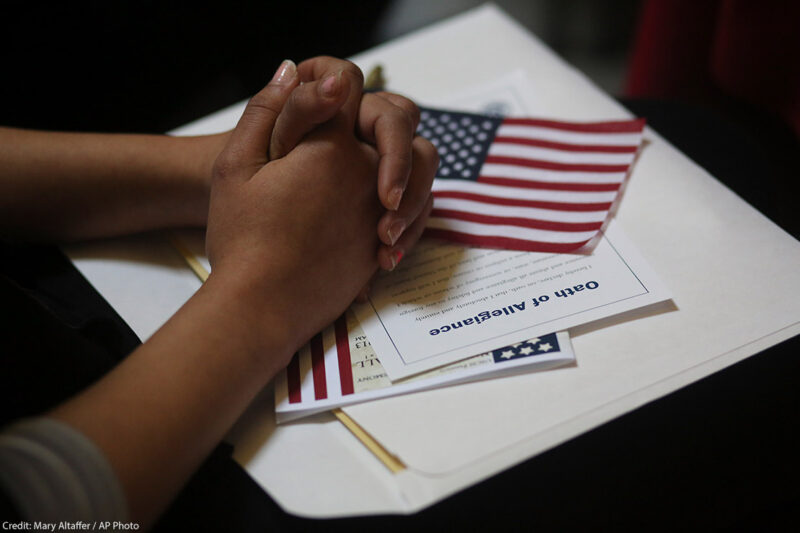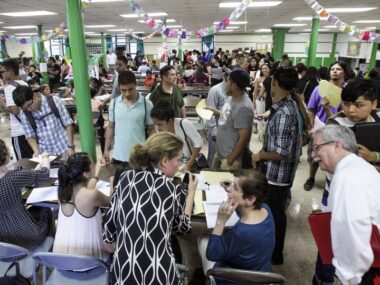Navigating the U.S. Immigration Process: From Visa Applications to Green Card Interviews
Introduction:
Navigating the United States immigration process is akin to embarking on a journey through a maze of rules, regulations, and bureaucratic procedures. For individuals and families seeking to enter the United States for temporary employment, permanent residency, or citizenship, understanding the intricacies of the immigration system is paramount. In this article, we aim to shed light on the multifaceted U.S. immigration process, from visa applications to green card interviews, offering a comprehensive overview to help individuals better comprehend the path to living and working in the United States.
The United States, often dubbed the land of opportunity, attracts millions of immigrants each year with its promise of a better life and abundant opportunities. However, realizing these aspirations requires navigating a complex and daunting immigration system that is governed by a myriad of laws, regulations, and procedures. From determining the appropriate visa category to preparing for interviews and providing documentation, each step of the immigration journey presents its own set of challenges and requirements.
Whether individuals are seeking temporary employment to pursue career opportunities, permanent residency to establish roots in the country, or citizenship to fully participate in civic life, understanding the U.S. immigration process is essential. It is a journey marked by uncertainty, perseverance, and resilience, but with the right knowledge and guidance, individuals can navigate the immigration maze and achieve their goals of living and working in the United States.
In the following sections, we will delve into the key components of the U.S. immigration process, providing insights into visa categories, application procedures, and important milestones such as green card interviews. By demystifying the immigration process and offering practical guidance, we aim to empower individuals and families to navigate the complexities of U.S. immigration with confidence and clarity.
Understanding Visa Categories:
In the intricate world of U.S. immigration, the first step for individuals and families is deciphering the labyrinth of visa categories. These categories are designed to cater to a variety of purposes, ranging from short-term visits to permanent settlement. Let’s delve deeper into the nuances of visa categories to provide a comprehensive understanding.
- Nonimmigrant Visas:
Nonimmigrant visas are intended for temporary visits to the United States. These visas cater to a wide range of purposes, including tourism, education, temporary employment, and cultural exchange programs. Common nonimmigrant visa categories include:
– Tourist Visas (B-1/B-2): For individuals visiting the U.S. for tourism or medical treatment.
– Student Visas (F-1/M-1): For individuals pursuing academic or vocational studies in the U.S.
– Temporary Worker Visas (H-1B): For individuals employed in specialty occupations that require specialized knowledge and expertise.
– Exchange Visitor Visas (J-1): For individuals participating in exchange programs, such as educational or cultural exchanges.
- Immigrant Visas:
Immigrant visas, on the other hand, are intended for individuals seeking to live permanently in the United States. These visas are typically obtained through family sponsorship, employment-based immigration, or diversity visa lottery programs. Common immigrant visa categories include:
– Family-Based Immigration: For individuals sponsored by U.S. citizens or lawful permanent residents (green card holders), including spouses, parents, children, and siblings.
– Employment-Based Immigration: For individuals sponsored by U.S. employers based on their skills, expertise, or job qualifications.
– Diversity Visa Lottery: For individuals from countries with low rates of immigration to the U.S., selected through a random lottery process.
Visa Application Process:
Once the appropriate visa category has been identified, individuals must navigate the visa application process, which can vary depending on the type of visa sought and the applicant’s country of residence. The application process typically involves several steps, including:
– Completing a visa application form, either online or through a paper application.
– Gathering and submitting supporting documentation, such as a passport, photographs, and proof of financial means.
– Scheduling and attending a visa interview at a U.S. consulate or embassy in the applicant’s home country.
– Paying applicable visa application fees.
Employment-Based Immigration:
For individuals seeking employment-based immigration to the U.S., the process typically involves sponsorship by a U.S. employer who demonstrates the need for the individual’s skills or expertise. Employers may petition for foreign workers through various employment-based visa categories, such as:
– H-1B visas for specialty occupation workers.
– L-1 visas for intracompany transferees.
– EB-3 visas for skilled workers, professionals, and other workers.
The process may also involve labor certification through the Department of Labor to ensure that hiring foreign workers will not adversely affect U.S. workers.
Family-Based Immigration:
Family sponsorship is another common pathway to immigrate to the U.S., allowing U.S. citizens and lawful permanent residents (green card holders) to sponsor certain family members for immigration benefits. Eligible family members may include spouses, parents, children, and siblings, depending on the sponsor’s immigration status and relationship to the beneficiary. The process typically involves filing a petition with USCIS, providing proof of the familial relationship, and attending a visa interview at a U.S. consulate or embassy.
Adjustment of Status and Green Card Interviews:
Once an individual has been granted a visa to enter the U.S., they may seek to adjust their status to become a lawful permanent resident (green card holder). Adjustment of status is available to certain individuals who are already present in the U.S. and meet eligibility criteria, such as immediate relatives of U.S. citizens, certain employment-based immigrants, and diversity visa lottery winners. The adjustment of status process typically involves filing an application with USCIS, attending a biometrics appointment, and attending a green card interview where the applicant’s eligibility for permanent residency is assessed.
READ ALSO: Impact of Blockchain Technology on Traditional Business Models
During the green card interview, a USCIS officer will review the applicant’s immigration history, background information, and supporting documentation to determine their eligibility for permanent residency. The interview may also include questions about the applicant’s intentions, admissibility, and eligibility for any waivers or exemptions. Additionally, the officer may request additional evidence or documentation to support the application, such as medical examinations, financial records, or affidavits of support.
Conclusion:
Understanding the intricacies of U.S. immigration and navigating the visa application process can be challenging, but it is a crucial step towards achieving one’s immigration goals. Whether seeking temporary employment, permanent residency, or citizenship, individuals and families must familiarize themselves with the various visa categories, requirements, and procedures. By seeking guidance from qualified immigration professionals and adhering to immigration laws and regulations, individuals can successfully navigate the journey to living and working in the United States.




